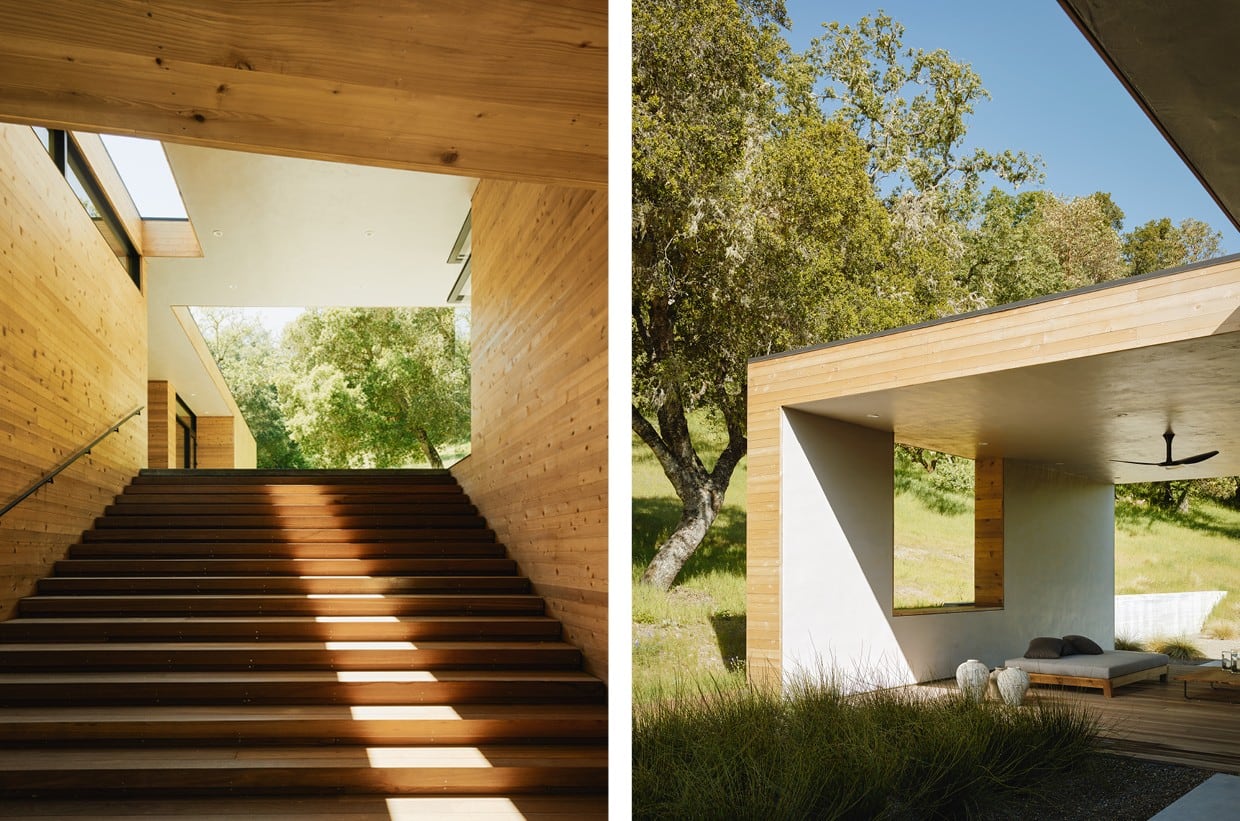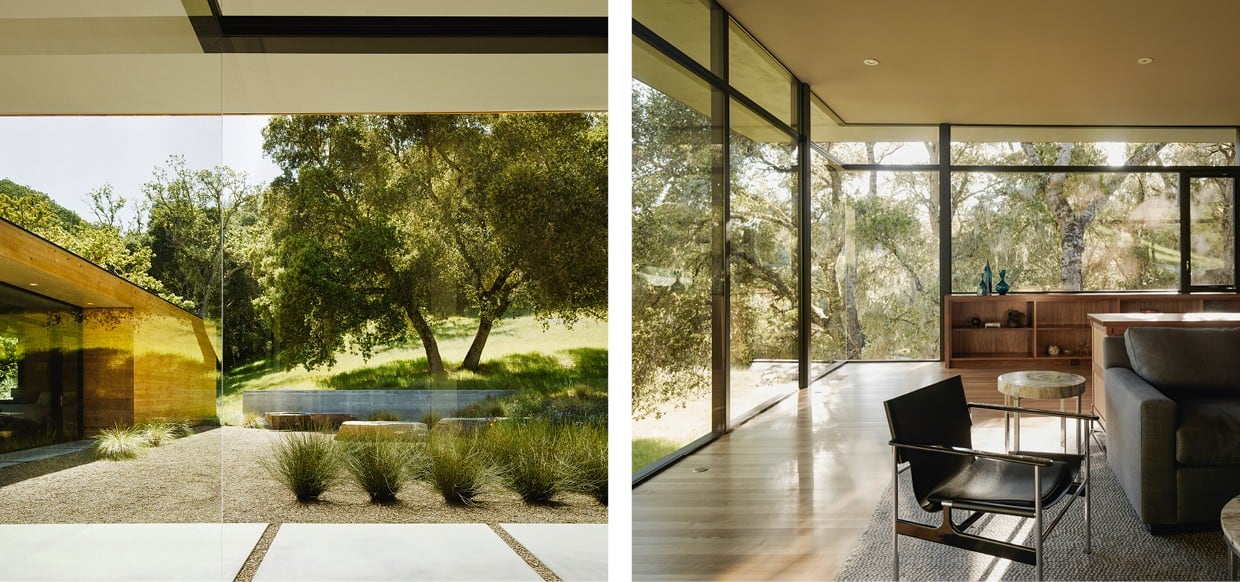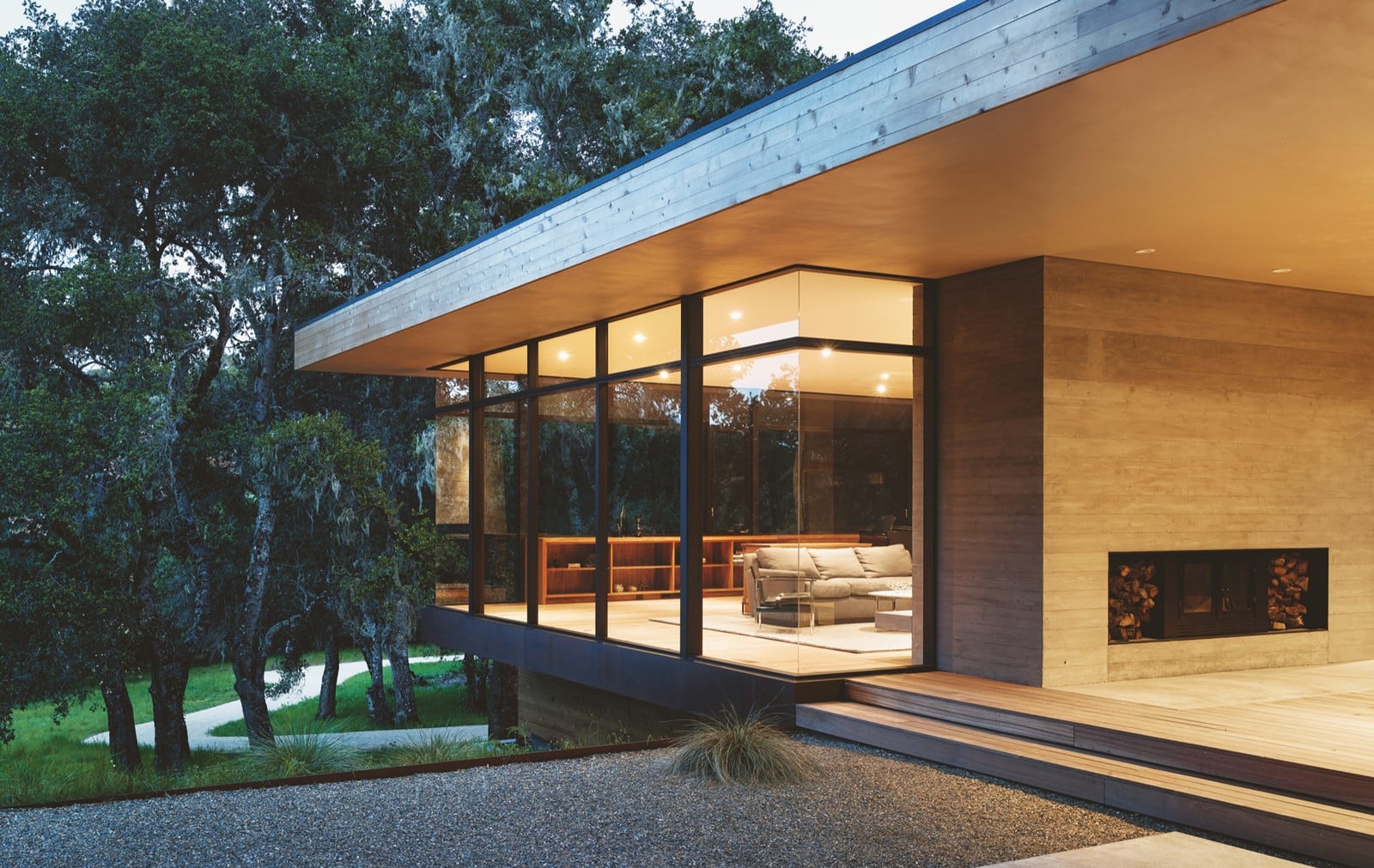This property in the Santa Lucia Preserve in California plays with the separation of inside and outside. Covered, open seating areas and enclosed spaces with huge windows alternate each other. The old oak trees on the site form the framework for this building with exceptional views.
 Piechota Architecture is an architecture studio in San Francisco that has been designing residential and commercial projects for twenty years. The team strives to create architecture that is ‘deliberate without being loud, and subtle without being quiet,’ according to Piechota Architecture. They are also known for their appreciation of the Californian landscape. This is no different in their Carmel Valley Residence project.
Piechota Architecture is an architecture studio in San Francisco that has been designing residential and commercial projects for twenty years. The team strives to create architecture that is ‘deliberate without being loud, and subtle without being quiet,’ according to Piechota Architecture. They are also known for their appreciation of the Californian landscape. This is no different in their Carmel Valley Residence project. 
Piechota Architecture knows how to honour nature and blur the line between outside and inside.
The design was based entirely on the site: from the shape and orientation of the building to the selection of the materials. Carmel Valley Residence not only borrows its name from the Carmel Valley location. The shape of the residence was also inspired by the Californian valley. The L-shaped residence fits in perfectly with the contours of the irregular landscape. The materials of the residence, such as concrete, weathered steel and cedar wood, reflect the colours of the surrounding nature. In order to let the environment and light in as much as possible, the architects placed floor-to-ceiling windows.  The house consists of two parts, in one part you can find the guesthouse and the other contains the master suite and the living spaces. Between the two parts is a spa space that is open on one side. The separation of the parts creates a connection with the outside space, which as a consequence becomes more involved with the house. The building is minimalistic in its form so that all the attention goes to the surroundings. Piechota Architecture knows how to honour nature and blur the line between outside and inside.
The house consists of two parts, in one part you can find the guesthouse and the other contains the master suite and the living spaces. Between the two parts is a spa space that is open on one side. The separation of the parts creates a connection with the outside space, which as a consequence becomes more involved with the house. The building is minimalistic in its form so that all the attention goes to the surroundings. Piechota Architecture knows how to honour nature and blur the line between outside and inside.  Photography by Joe Fletcher
Photography by Joe Fletcher